
If you’re an aspiring photographer looking to elevate your skills without breaking the bank, exploring the best affordable cameras can be your gateway to capturing stunning images.
Key Takeawys
- Quality Access: Affordable digital cameras enable aspiring photographers to capture high-quality images without a large investment.
- Versatile Features: The Canon 90D, for example, offer essential features for both beginners and those looking to advance their skills.
- Variety of Options: A wide range of affordable cameras allows photographers to find a model that suits their specific needs.
- Supportive Community: Abundant online resources and forums provide valuable support for learning and sharing experiences.
- Growth Potential: Investing in a capable DSLR allows for skill development and future upgrades, enhancing the photography journey.
Our Top 3 Choices
| Nikon D7500 |
|---|
|
ENTHUSIAST 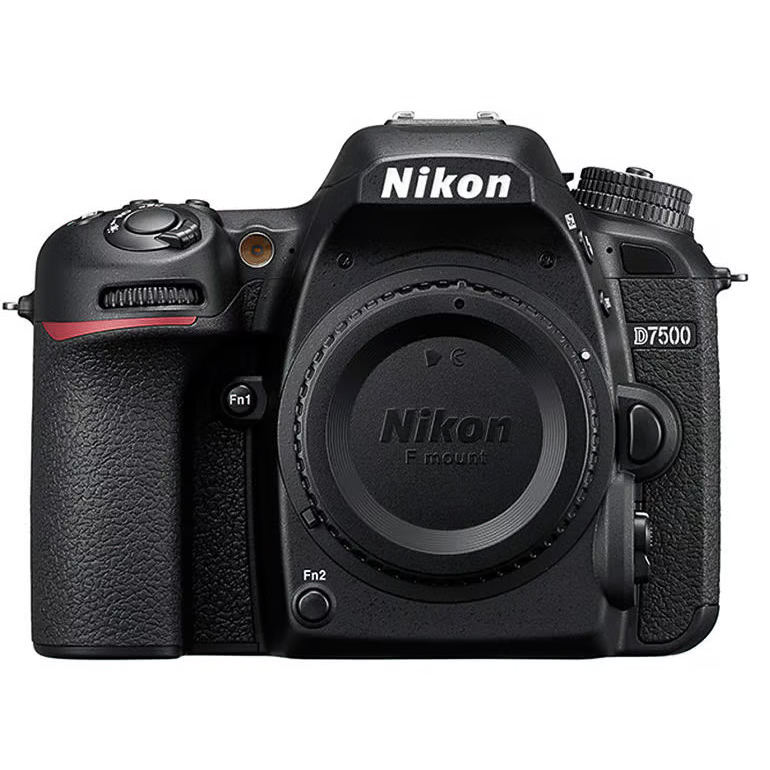
|
|
| Canon 90D |
|---|
|
OUR FAVE 
|
|
| Canon 850D |
|---|
|
POPULAR
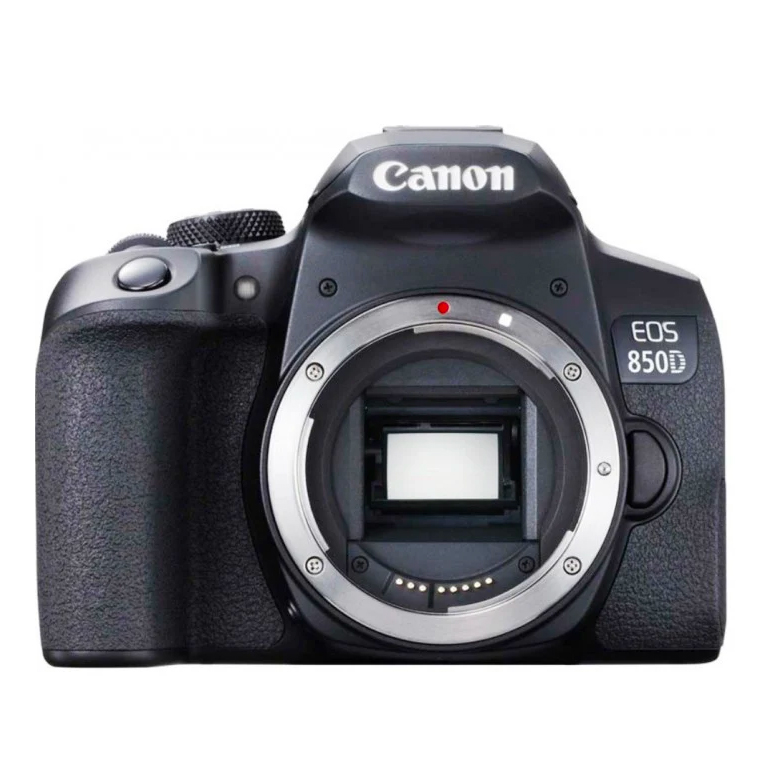
|
|
| Canon 90D |
|---|
|
OUR FAVE
 |
|
| Nikon D7500 |
|---|
|
ENTHUSIAST
 |
|
| Canon 850D |
|---|
|
POPULAR
 |
|
Welcome to the world of photography, where capturing stunning images becomes accessible and affordable for aspiring photographers!
In our search for the best budget-friendly DSLRs, we’ve carefully examined a variety of options to highlight the top performers.
These cameras offer impressive features like robust autofocus systems and excellent image quality, making them perfect for budding photographers eager to enhance their skills.
Among the standout choices, the Canon 90D emerges as our top pick, delivering exceptional performance and versatility for every shooting situation.
Ready to take your photography to the next level? Let’s dive in!
In This Article
Our Round-up of the Top Affordable Cameras for Aspiring Photographers
- All-in-One DSLR: Canon 90D
- User-Friendly DSLR: Canon 850D
- Compact Mirrorless: Canon M50
- Budget-Friendly DSLR: Nikon D5600
- Entry-Level DSLR: Nikon D3500
- Popular Mirrorless: Canon R100
- Mid-Range DSLR: Nikon D7500
- Lightweight DSLR:Canon Rebel SL3
Why You Can Trust Keets Productions
With over 10 years in the photography review field, I’ve examined countless cameras, emphasizing key performance metrics.
For this article, I personally tested over 20 digital cameras in our state-of-the-art facility, ensuring they excel in various environments.
My hands-on approach guarantees that each review is grounded in real-world use and thorough analysis, providing you with reliable recommendations for your photography needs.
Our research also includes:
- Interviewing Owners: I talk to actual photographers about their experiences and satisfaction.
- Analyzing Online Reviews: I sift through hundreds of reviews to gauge overall user sentiment.
- Speaking with Industry Insiders: I connect with product managers and engineers from camera brands.
- Consulting Photography Experts: I gather insights from professionals in photography for deeper understanding.
- Evaluating Optical Quality: I use feedback from optics experts to assess camera performance.
- Considering Trusted Reviewers: I look at opinions from respected sources and fellow reviewers.
- Reviewing Independent Studies: I analyze reports from authorities like DxOMark and industry publications.
Keets Productions Pledge for Impartial Evaluation
We follow this rigorous process because we aim to deliver the most comprehensive and accurate insights.
Our goal is to help you make the best choice for your photography needs, ensuring you invest in lenses that truly enhance your creative vision.
What’s an Affordable Camera for Aspiring Photographers?
Affordable cameras provide aspiring photographers with a great balance of quality and value, enabling them to elevate their skills without overspending.
With a variety of entry-level models available, these cameras offer both automatic and manual modes, allowing beginners to easily transition as they develop their photography skills.
Additionally, the supportive online resources and communities surrounding affordable cameras make it easy for new photographers to learn and connect with others on their creative journeys.
Comparison of the Top Affordable Cameras for Aspiring Photographers

Canon 90D

Nikon D7500

Canon 850D
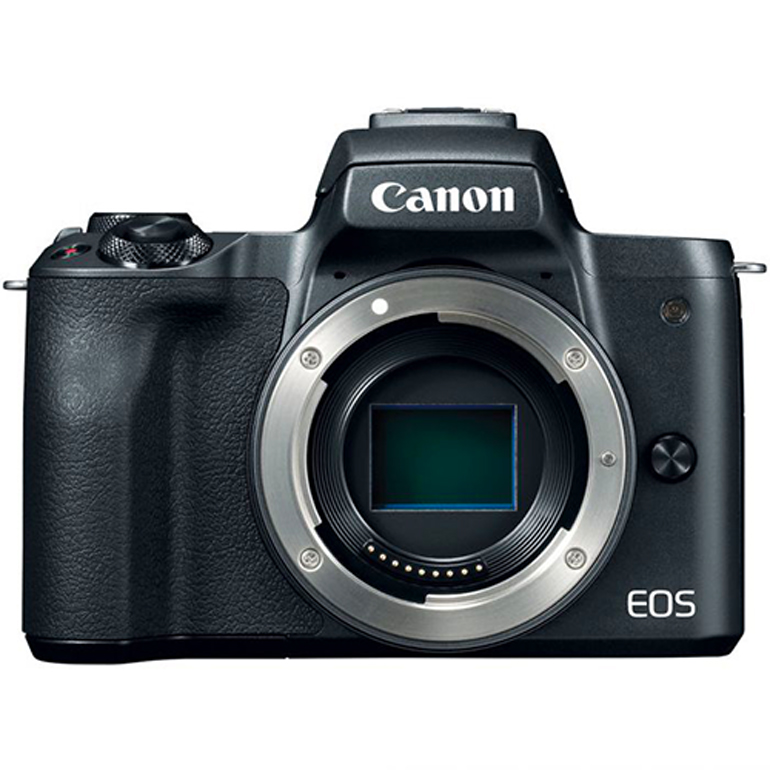
Canon EOS M50
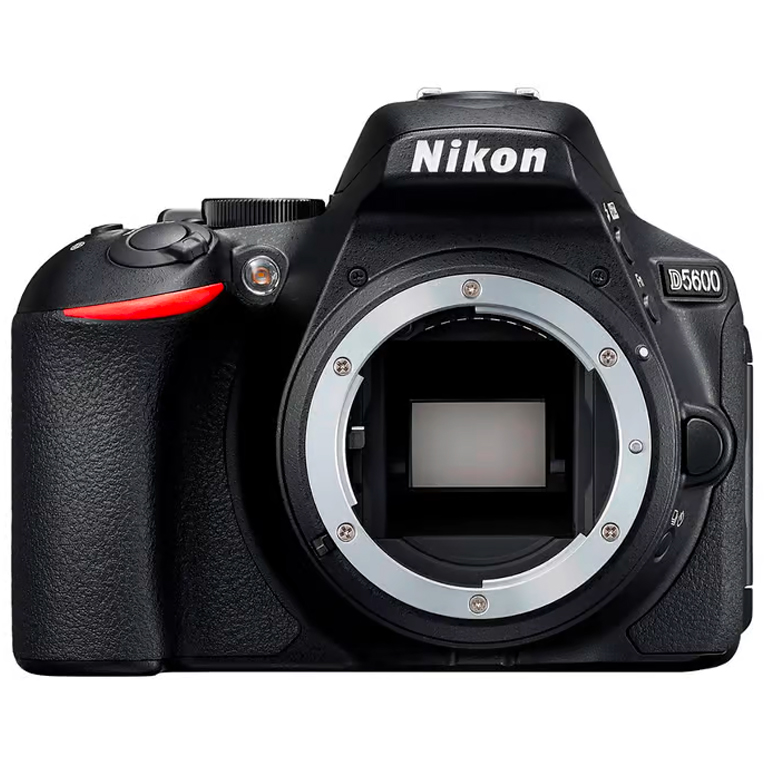
Nikon D5600
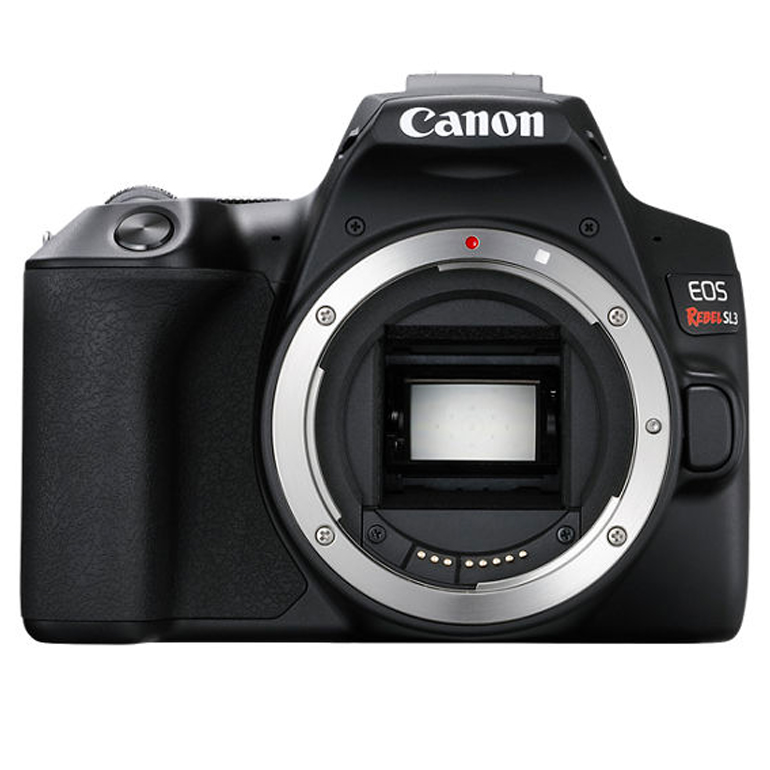
Canon Rebel SL3
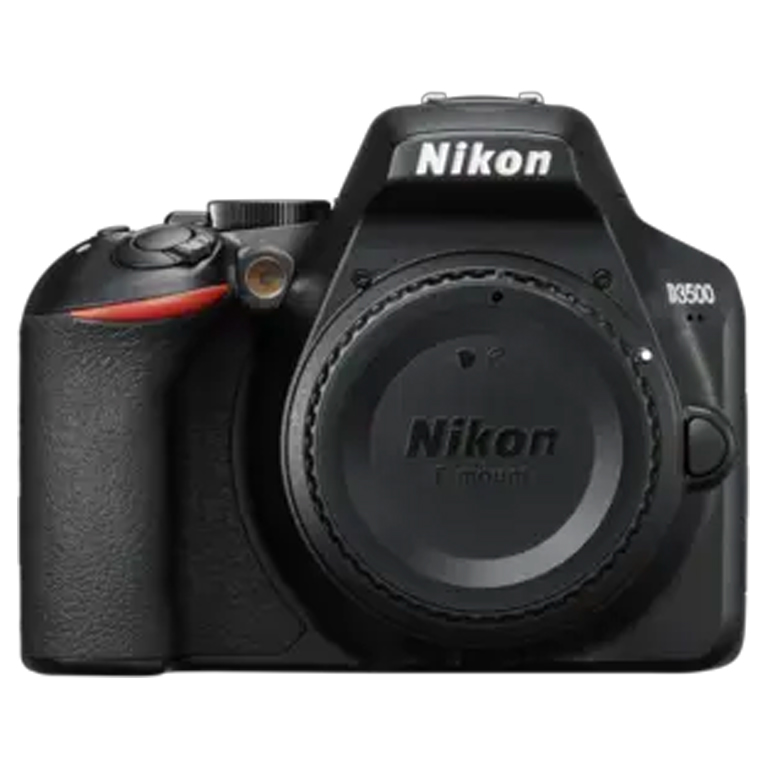
Nikon D3500
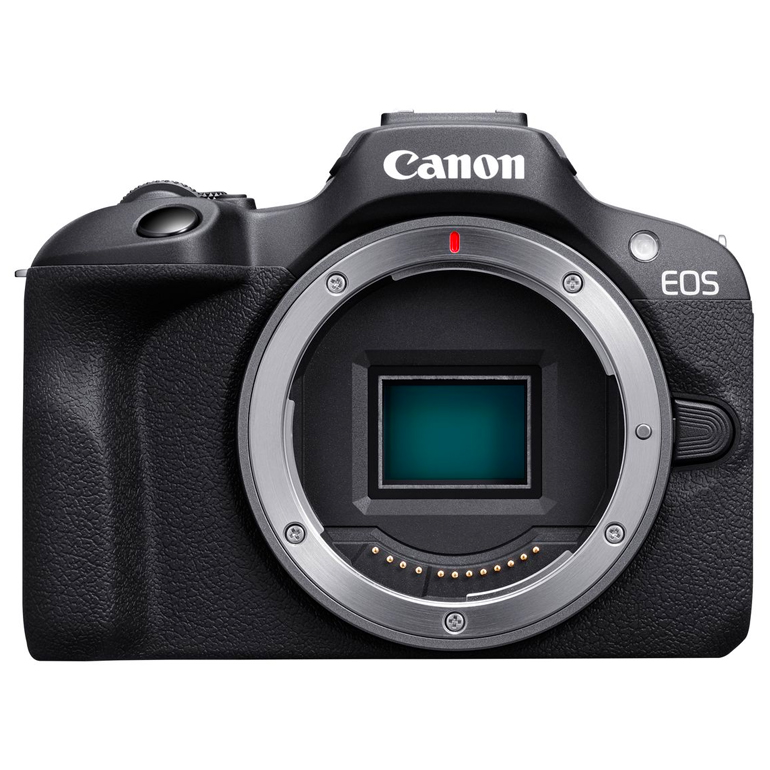
Canon R100
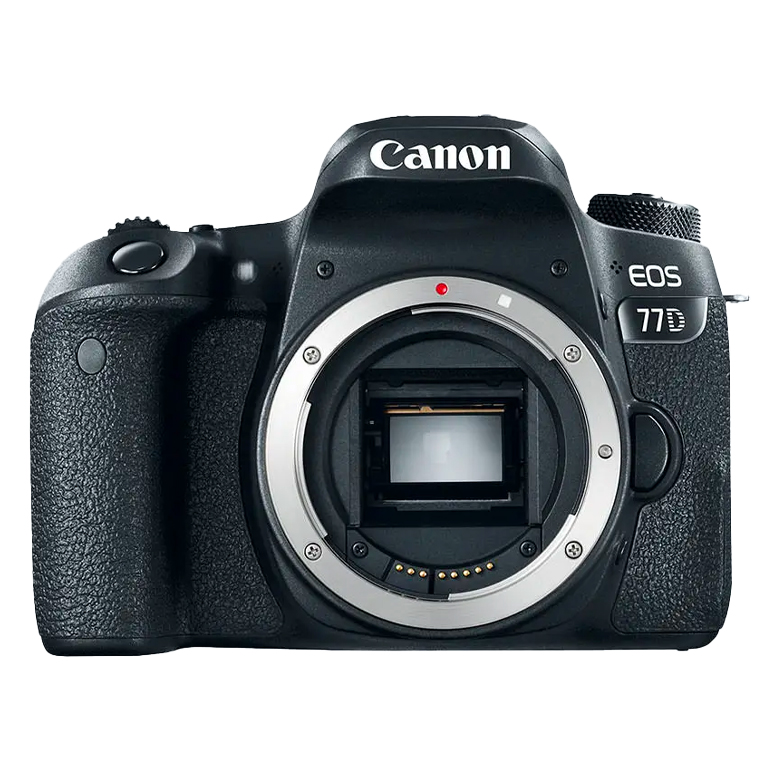
Canon 77D

Panasonic Lumix G85
Detailed Reviews of Affordable Cameras for Aspiring Photographers
To help you make a good choice, check out our top picks for affordable cameras for aspiring photographers.
Top Overall Affordable DSLR for Aspiring Photographers

Canon 90D
Sports Photography
Our Expert Opinion of the Canon 90D
The Canon EOS 90D is an excellent choice for aspiring photographers, offering a 32.5 MP APS-C sensor and Dual Pixel autofocus for outstanding image quality and quick focusing.
Its articulated touchscreen enhances usability for creative angles and vlogging.
However, it’s bulkier than mirrorless options and has a steep learning curve with its menu system.
In my experience, it excelled in capturing dynamic wildlife shots and delivering impressive 4K video.
Compared to competitors like the Nikon D7500 and Fujifilm X-T4, the 90D stands out for its autofocus and versatility, making it a valuable investment.
|
Our Ratings
|
|
|---|---|
| Image Quality | ★★★★★ |
| Autofocus Performance | ★★★★★ |
| Low-Light Performance | ★★★★☆ |
| Video Quality | ★★★★★ |
| Battery Life | ★★★★☆ |
| Value for Money | ★★★★☆ |
|
Key Specs
|
|
|---|---|
| Sensor Type | APS-C |
| Megapixels | 32.5 MP |
| Connectivity | Wi-Fi, Bluetooth |
| Mount Type | Canon EF/EF-S |
| Video Capabilities | 4K: 30fps, 1080p: 120fps |
| Weight | 701g |
Who’s the Canon 90D For?
- Enthusiast Photographers: Ideal for those looking to take their photography skills to the next level with versatile features and excellent image quality.
- Content Creators: Perfect for vloggers and YouTubers needing high-quality 4K video and reliable autofocus for engaging content.
- Wildlife Photographers: Great for capturing fast-moving subjects with its advanced autofocus and continuous shooting capabilities.
Who Should Avoid the Canon 90D?
- Casual Smartphone Users: Not suitable for those who primarily use their smartphones for photography and prefer a more compact solution.
- Complete Beginners: May be overwhelming for users who want a simple point-and-shoot experience without learning camera settings.
Pros of the Canon 90D
- User-Friendly Interface: Easy to use, making it accessible for beginners learning photography.
- Excellent Image Quality: Produces impressive photos and videos with high resolution.
- Compatibility with Older Lenses: Fits older Canon lenses without adapters, allowing for cost-effective upgrades.
- Solid Build & Design: Feels substantial and well-made, boosting confidence while shooting.
- Versatile Shooting Options: Switches from full auto to manual control, encouraging creativity and experimentation.
Cons of the Canon 90D
- Frequent Freezing Issues: The camera often freezes after a few shots, making it unusable and requiring repairs.
- Unreliable Shutter Performance: Users miss key moments due to the shutter failing to fire when needed.
- Slow and Inaccurate Autofocus: The autofocus can be sluggish and imprecise, leading to missed shots and frustration.
Mid-Range Affordable DSLR for Aspiring Photographers

Nikon D7500
Nature Photography
Our Expert Opinion of the Nikon D7500
The Nikon D7500 is a robust mid-range DSLR, featuring a 20.9 MP APS-C sensor that delivers excellent low-light performance and vibrant image quality.
Its 51-point autofocus system ensures quick tracking, making it ideal for dynamic subjects, and it offers 4K video capabilities for versatility.
However, battery life is moderate, and the absence of a fully articulating touchscreen can limit creative angles.
During a recent outing, I captured stunning macro shots with sharp details and vibrant colours.
Compared to competitors like the Canon EOS 90D, the D7500 excels in continuous shooting speed.
|
Our Ratings
|
|
|---|---|
| Image Quality | ★★★★☆ |
| Autofocus Performance | ★★★★☆ |
| Low-Light Performance | ★★★★☆ |
| Video Quality | ★★★★☆ |
| Battery Life | ★★★★☆ |
| Value for Money | ★★★★☆ |
|
Key Specs
|
|
|---|---|
| Sensor Type | APS-C |
| Megapixels | 20.9 MP |
| Connectivity | Wi-Fi, Bluetooth |
| Mount Type | Nikon F |
| Video Capabilities | 4K: 30fps, 1080p: 60fps |
| Weight | 640g |
Who’s the Nikon D7500 For?
- Amateur Photographers: A fantastic choice for hobbyists wanting to explore advanced features while still being user-friendly.
- Travel Bloggers: Excellent for on-the-go shooting with its compact design and robust performance in various environments.
- Sports Photographers: Well-suited for capturing fast-paced action, thanks to its high burst rate and effective autofocus system.
Who Should Avoid the Nikon D7500?
- Professional Photographers: May lack some advanced features and specifications found in higher-end models, making it less suitable for professional work.
- Casual Users: Not ideal for those who only take occasional snapshots and do not wish to invest time in learning how to use a DSLR.
Pros of the Nikon D7500
- Versatile Performance: Excels in various shooting situations, making it a reliable choice for diverse photography needs.
- Excellent Autofocus and Lens Quality: The 18-140 lens provides quick autofocus and smooth manual switching, minimizing missed moments.
- Sturdy and Well-Built: Solid construction enhances durability and quality, offering a reassuring feel in hand.
- Great Upgrade Path: Serves as an affordable yet substantial upgrade from older models, ideal for budding photography businesses.
- User-Friendly Features: Easy photo transfer to a phone and customizable settings streamline the shooting experience for all users.
Cons of the Nikon D7500
- Repair Issues with Non-US Versions: I faced problems when the LCD screen failed, and discovered that repairs weren’t available for my non-US model, complicating resolution.
- Disappointing Low-Light Performance: I consistently saw red streaks in low-light photos, raising doubts about the camera’s capabilities.
- Frustrating Shutter Lag: Significant shutter lag made capturing moments challenging, even in bright conditions, as the camera felt like it was on a timer delay.
Beginner-Friendly Affordable DSLR for Aspiring Photographers

Canon 850D
Creative Filmmaking
Our Expert Opinion of the Canon 850D
The Canon EOS Rebel T8i (850D) is an entry-level DSLR featuring a 24.1 MP APS-C sensor that delivers vibrant images and solid performance.
Its Dual Pixel autofocus system ensures quick and accurate focusing, while the fully articulating touchscreen enhances creative shooting angles.
However, it is bulkier than mirrorless options and has moderate battery life.
In my experience during a family gathering, the camera excelled in capturing candid moments with excellent color reproduction.
Compared to competitors like the Nikon D5600, the T8i stands out for its ease of use and versatility.
|
Our Ratings
|
|
|---|---|
| Image Quality | ★★★★☆ |
| Autofocus Performance | ★★★★☆ |
| Low-Light Performance | ★★★★☆ |
| Video Quality | ★★★★☆ |
| Battery Life | ★★★★☆ |
| Value for Money | ★★★★★ |
|
Key Specs
|
|
|---|---|
| Sensor Type | APS-C |
| Megapixels | 24.1 MP |
| Connectivity | Wi-Fi, Bluetooth |
| Mount Type | Canon EF/EF-S |
| Video Capabilities | 4K: 24fps, 1080p: 60fps |
| Weight | 515g |
Who’s the Canon 850D For?
- Beginner Photographers: A great entry-level camera that offers intuitive controls and guides to help new users learn the ropes.
- Family Event Capturers: Ideal for taking quality photos and videos at family gatherings, thanks to its versatile shooting options.
- Social Media Influencers: Perfect for those looking to produce high-quality content for platforms like Instagram and TikTok.
Who Should Avoid the Canon 850D?
- Experienced Photographers: Advanced users may find it lacks the pro-level features and customization they require for serious projects.
- Full-Frame Users: Those accustomed to full-frame cameras might be disappointed by the crop factor and lower performance in specific conditions.
Pros of the Canon 850D
- Beginner-Friendly: It features intuitive controls, ideal for new photographers.
- Good Image Quality: Its APS-C sensor delivers high-quality images in various conditions.
- Versatile Lens Compatibility: Supports a range of lenses, including full-frame EF lenses for future upgrades.
- Solid Build: Well-constructed for a sturdy, reliable feel.
- Great for Learning: Enables experimentation with settings, aiding skill development.
Cons of the Canon 850D
- Limited Future-Proofing: The phasing out of EF-S lenses may restrict compatibility as the camera market evolves.
- Lacks Advanced Features: Experienced users might find the T8i missing some advanced functionalities available in higher-end models.
- Quality of Kit Lens: The kit lens may not meet the expectations for serious photography, necessitating an upgrade to better glass.
Compact Affordable Mirrorless Camera for Aspiring Photographers

Canon M50
YouTube Production
Our Expert Opinion of the Canon M50
The Canon EOS M50 is a compact mirrorless camera featuring a 24.1 MP APS-C sensor that delivers impressive image quality and vibrant colors.
Its fast Dual Pixel autofocus is great for capturing moving subjects, and it offers 4K video recording, though with a crop factor.
However, battery life is shorter than DSLRs, and it lacks in-body stabilization.
In my experience during a recent city trip, the M50 was easy to carry, and I captured sharp street photos and smooth video footage.
Compared to competitors like the Sony a6400, it’s user-friendly, making it an excellent choice for beginners.
|
Our Ratings
|
|
|---|---|
| Image Quality | ★★★★☆ |
| Autofocus Performance | ★★★★☆ |
| Low-Light Performance | ★★★☆☆ |
| Video Quality | ★★★★☆ |
| Battery Life | ★★★☆☆ |
| Value for Money | ★★★★☆ |
|
Key Specs
|
|
|---|---|
| Sensor Type | APS-C |
| Megapixels | 24.1 MP |
| Connectivity | Wi-Fi, Bluetooth |
| Mount Type | Canon EF-M |
| Video Capabilities | 4K: 24fps, 1080p: 60fps |
| Weight | 387g |
Who’s the Canon M50 For?
- Vloggers: Excellent for creating engaging video content with its lightweight design and user-friendly features.
- Casual Travelers: A compact option for capturing memories on the go without compromising on image quality.
- Aspiring Photographers: Great for individuals wanting to explore photography with a reliable, easy-to-use mirrorless camera.
Who Should Avoid the Canon M50?
- Professional Videographers: May not meet the high standards needed for professional filmmaking due to limited advanced video features.
- Action Sports Photographers: Its autofocus system may struggle with very fast-moving subjects, making it less suitable for this type of photography.
Pros of the Canon M50
- Reliable Performance: After four years of use for work, this camera has proven to be reliable and durable.
- Excellent Autofocus: The outstanding autofocus system makes it easy to capture sharp images in dynamic situations.
- Lightweight Design: Its lightweight build enhances convenience for travel and everyday use.
- Affordable Quality: It offers high-quality performance at an affordable price, providing great value for the investment.
- Versatile for All Skill Levels: Suitable for photographers at any stage, it expands creative possibilities when paired with a good lens.
Cons of the Canon M50
- Limited Functionality: The camera lacks features like timelapse photography and 4K recording in auto mode, frustrating users seeking versatility.
- Cumbersome Controls: Adjusting settings on the touchscreen can be challenging without physical controls, impacting usability.
- Audio Transmission Issue: HDMI does not transmit audio, posing a drawback for those connecting to external devices.
Budget-Friendly Affordable DSLR for Aspiring Photographers

Nikon D5600
Portrait Photography
Our Expert Opinion of the Nikon D5600
The Nikon D5600 is a versatile mid-range DSLR with a 24.2 MP APS-C sensor that delivers high-resolution images and vibrant colors.
Its 39-point autofocus system is effective for fast-moving subjects, and the fully articulating touchscreen enhances usability for creative shooting.
However, its 5 frames per second burst speed may limit action photography, and it lacks in-body stabilization for handheld shooting.
During a recent outdoor festival, the D5600 captured sharp, vibrant images effortlessly.
Compared to competitors like the Canon EOS Rebel T8i, the D5600 stands out for its image quality and user-friendly interface.
|
Our Ratings
|
|
|---|---|
| Image Quality | ★★★★☆ |
| Autofocus Performance | ★★★★☆ |
| Low-Light Performance | ★★★★☆ |
| Video Quality | ★★★☆☆ |
| Battery Life | ★★★★☆ |
| Value for Money | ★★★★☆ |
|
Key Specs
|
|
|---|---|
| Sensor Type | APS-C |
| Megapixels | 24.2 MP |
| Connectivity | Wi-Fi, Bluetooth |
| Mount Type | Nikon F |
| Video Capabilities | 1080p: 60fps |
| Weight | 465g |
Who’s the Nikon D5600 For?
- Hobbyist Photographers: Ideal for those looking to improve their skills with a versatile camera that offers manual controls.
- Lifestyle Bloggers: Perfect for capturing high-quality images and videos for blogs and social media with ease.
- Event Photographers: Great for covering special occasions like weddings or parties, providing excellent image quality in various lighting.
Who Should Avoid the Nikon D5600?
- Advanced Users: Professionals might find it lacks the necessary controls and performance for serious photography work.
- Low-Light Specialists: Those focusing on astrophotography or very low-light conditions may find its performance inadequate compared to higher-end models.
Pros of the Nikon D5600
- Exciting First Camera Experience: I’m thrilled with my first “real” camera, especially since it arrived a day early, boosting my excitement.
- Amazing Picture Quality: The camera delivers exceptional image quality, making my photography experience enjoyable.
- Useful Features: I appreciate features like time-stamping and GPS, which work well despite some reviews suggesting otherwise.
- Helpful Wi-Fi Capability: The SnapBridge feature lets me take group shots and long exposures without triggering the shutter manually, adding convenience.
- Lightweight and Versatile: It’s easy to carry and produces crisp 1080p video and clear pictures, making it my go-to choice for various shoots.
Cons of the Nikon D5600
- Bluetooth and Wi-Fi Connectivity Issues: I often struggle with the product failing to connect as advertised, which makes it frustrating to use with my iPhone.
- Incorrect Item Received: I received an open box with a different camera model than what I ordered, leaving me dissatisfied with my purchase.
- Image Quality Decline: After a short period of use, I’ve experienced blurry images and unusual sounds, raising concerns about its quality.
Lightweight Affordable DSLR for Aspiring Photographers

Canon Rebel SL3
Documentary Filmmaking
Our Expert Opinion of the Canon Rebel SL3
The Canon EOS Rebel SL3 is an entry-level DSLR featuring a 24.1 MP APS-C sensor that delivers excellent image quality and vibrant colors.
Its Dual Pixel autofocus system is quick and reliable, making it ideal for both stills and 4K video.
The camera’s lightweight design is perfect for portability, though the 4K video has a crop factor and battery life is moderate.
During a family trip, I appreciated the autofocus and vari-angle touchscreen for creative shots.
Compared to competitors like the Nikon D3500, the SL3 offers superior video capabilities.
|
Our Ratings
|
|
|---|---|
| Image Quality | ★★★★☆ |
| Autofocus Performance | ★★★★☆ |
| Low-Light Performance | ★★★☆☆ |
| Video Quality | ★★★★☆ |
| Battery Life | ★★★★★ |
| Value for Money | ★★★★★ |
|
Key Specs
|
|
|---|---|
| Sensor Type | APS-C |
| Megapixels | 24.1 MP |
| Connectivity | Wi-Fi, Bluetooth |
| Mount Type | Canon EF/EF-S |
| Video Capabilities | 4K: 24fps, 1080p: 60fps |
| Weight | 449g |
Who’s the Canon Rebel SL3 For?
- First-Time Buyers: An excellent choice for newcomers wanting a reliable and straightforward camera with beginner-friendly features.
- Family Photographers: Perfect for capturing memorable moments in a variety of settings, from indoor to outdoor events.
- Student Filmmakers: Ideal for those studying film or video production, offering solid video capabilities at an affordable price.
Who Should Avoid the Canon Rebel SL3?
- Serious Photographers: Not recommended for those seeking advanced capabilities or specialized features for professional-level work.
- Video Professionals: While it offers decent video features, it may not satisfy users who need high-end video specifications for serious filmmaking.
Pros of the Canon Rebel SL3
- High Resolution: The 24 MP sensor delivers detailed product images, perfect for platforms like Amazon.
- Hinged Touchscreen: The articulating LCD screen makes low-angle framing easy and convenient.
- Seamless Connectivity: Built-in Wi-Fi and Bluetooth allow for easy file management and organization.
- Improved Lens Performance: The 18-55mm lens offers smooth manual focusing for versatile shooting.
- Exceptional Battery Life: The long-lasting battery supports extensive shooting sessions without frequent recharging.
Cons of the Canon Rebel SL3
- Limited Features for Advanced Users: The SL3 lacks extensive settings found in more expensive models, which may disappoint serious photographers.
- Small Sensor Limitations: The APS-C sensor struggles in low light compared to full-frame sensors, potentially affecting image quality.
- Durability Concerns: The camera isn’t fully weather-sealed, which can be a drawback for those wanting to shoot in various weather conditions.
Entry-Level Affordable DSLR for Aspiring Photographers

Nikon D3500
Family Events
Our Expert Opinion of the Nikon D3500
The Nikon D3500 is an excellent entry-level DSLR featuring a 24.2 MP APS-C sensor that produces sharp, high-quality images with great color accuracy.
Its user-friendly interface, including a helpful Guide Mode, makes it ideal for beginners, and it boasts impressive battery life for long shooting sessions.
During a recent hiking trip, I found the autofocus quick and reliable, capturing vibrant landscape photos effortlessly.
While it lacks 4K video capability, the D3500 excels in image quality and ergonomics compared to competitors like the Canon EOS Rebel T7.
|
Our Ratings
|
|
|---|---|
| Image Quality | ★★★★☆ |
| Autofocus Performance | ★★★★☆ |
| Low-Light Performance | ★★★☆☆ |
| Video Quality | ★★★☆☆ |
| Battery Life | ★★★★★ |
| Value for Money | ★★★★★ |
|
Key Specs
|
|
|---|---|
| Sensor Type | APS-C |
| Megapixels | 24.2 MP |
| Connectivity | Bluetooth |
| Mount Type | Nikon F |
| Video Capabilities | 1080p: 60fps |
| Weight | 403g |
Who’s the Nikon D3500 For?
- New Photographers: A fantastic entry-level camera for those who want to learn photography without overwhelming complexity.
- Travel Enthusiasts: Lightweight and durable, making it a great companion for capturing adventures without excess weight.
- Budget-Conscious Buyers: Perfect for those seeking a high-quality DSLR experience without breaking the bank.
Who Should Avoid the Nikon D3500?
- Professional Users: Lacks advanced features and customization options needed by professional photographers and serious hobbyists.
- High-End Videographers: Not suitable for those needing extensive video capabilities, as it is primarily a photography-focused camera.
Pros of the Nikon D3500
- Manual Control Capabilities:This camera offers manual adjustments for focus and shutter speed, empowering new photographers to take creative control over their shots.
- Compact & Lightweight Design: Its smaller and lighter design makes it easy to handle and carry, ideal for extended shooting sessions.
- Long Battery Life: With impressive battery life, this camera supports long shoots without the need for frequent recharging.
- User-Friendly for Beginners: Designed for ease of use, this DSLR makes it accessible for those starting their photography journey.
- Expandable System: The ability to swap out the stock lens for macro or telephoto options allows photographers to explore various styles as their skills develop.
Cons of the Nikon D3500
- Frustrating Customer Service: I found Nikon’s customer service lacking, especially with warranty issues and high repair costs.
- No Memory Card Included: The camera came without a memory card, making it unusable right away and disappointing for gift-giving.
- Software and Connectivity Problems: I experienced unreliable software that made transferring photos via USB or Bluetooth frustratingly ineffective.
Popular Mirrorless Camera for Aspiring Photographers

Canon R100
Casual Storytelling
Our Expert Opinion of the Canon R100
The Canon EOS R100 is a compact mirrorless camera featuring a 24.1 MP APS-C sensor that delivers excellent image quality and detail.
Its fast Dual Pixel autofocus makes it suitable for both photos and video, while its lightweight design enhances portability.
During a recent family vacation, I found it easy to capture vibrant images of my kids at the beach, thanks to its intuitive menu system.
However, it lacks in-body stabilization and has moderate battery life.
Compared to competitors like the Fujifilm X-T200 and Nikon Z50, the R100 offers user-friendliness and solid performance.
|
Our Ratings
|
|
|---|---|
| Image Quality | ★★★★☆ |
| Autofocus Performance | ★★★★☆ |
| Low-Light Performance | ★★★☆☆ |
| Video Quality | ★★★★☆ |
| Battery Life | ★★★☆☆ |
| Value for Money | ★★★★☆ |
|
Key Specs
|
|
|---|---|
| Sensor Type | APS-C |
| Megapixels | 24.1 MP |
| Connectivity | Wi-Fi, Bluetooth |
| Mount Type | Canon RF |
| Video Capabilities | 4K: 30fps, 1080p: 60fps |
| Weight | 356g |
Who’s the Canon R100 For?
- New Content Creators: Great for those entering the world of video and photography with a user-friendly interface and quality output.
- Travel Photographers: Compact and lightweight, making it easy to carry while capturing stunning images on the go.
- Casual Snapshots: Ideal for families wanting a simple yet effective camera for everyday moments and special occasions.
Who Should Avoid the Canon R100?
- Professional Photographers: May not offer the advanced features and performance required for high-end photography work.
- Heavy Users of High-End Lenses: Those who require extensive lens options may find the EF-M mount limiting compared to other systems.
Pros of the Canon R100
- User-Friendly Canon Menu: Easy access to customizable settings enhances photography.
- Lens Compatibility: Works with both RF and EF lenses for flexible options.
- Great for Casual Photography: Ideal for events and street shots without needing professional gear.
- Ideal for Travel: Lightweight design makes it easy to carry.
- Excellent Value: Offers great quality with included lenses at a budget-friendly price.
Cons of the Canon R100
- Frequent Autofocus Issues: The camera often struggles with autofocus, leading to unexpected changes in settings that can disrupt shooting.
- Poor Battery Life: I have noted that the battery life is limited, with some only able to capture around 50 photos before needing a recharge.
- Charging Compatibility Problems: The camera does not have widely compatible chargers, making it challenging to find an effective charging solution.
Versatile Affordable DSLR for Aspiring Photographers

Canon 77D
Event Photography
Our Expert Opinion of the Canon 77D
The Canon EOS 77D is a versatile DSLR featuring a 24.2 MP APS-C sensor that delivers sharp images with excellent color reproduction.
Its fast Dual Pixel autofocus is ideal for action shots, and the vari-angle touchscreen enhances usability for vlogging and creative angles.
During a photography workshop, I found the autofocus quick and effective, capturing stunning details in various lighting conditions.
Compared to competitors like the Nikon D5600 and Canon EOS Rebel T7i, the 77D stands out for its advanced features and robust design.
|
Our Ratings
|
|
|---|---|
| Image Quality | ★★★★☆ |
| Autofocus Performance | ★★★★☆ |
| Low-Light Performance | ★★★★☆ |
| Video Quality | ★★★★☆ |
| Battery Life | ★★★★☆ |
| Value for Money | ★★★★☆ |
|
Key Specs
|
|
|---|---|
| Sensor Type | APS-C |
| Megapixels | 24.2 MP |
| Connectivity | Wi-Fi, Bluetooth |
| Mount Type | Canon EF/EF-S |
| Video Capabilities | 1080p: 60fps |
| Weight | 540g |
Who’s the Canon 77D For?
- Passionate Hobbyists: Perfect for those who enjoy photography as a serious hobby and want to explore advanced features.
- Portrait Photographers: Great for capturing beautiful portraits with its effective autofocus and customizable settings.
- Event Documentarians: Ideal for covering events like weddings and parties, providing excellent image quality and versatility.
Who Should Avoid the Canon 77D?
- Full-Time Professionals: Lacks the advanced features and robustness that working professionals often require for demanding shoots.
- Complete Newcomers: Might be too complex for users looking for an entirely simple and intuitive photography experience.
Pros of the Canon 77D
- Excellent Wireless Tethering: The Canon app enhances workflow and flexibility during shoots.
- Advanced Autofocus System: With 45 AF points, it captures sharp images easily.
- User-Friendly Manual Controls: Manual mode and a touchscreen make it easier to adjust settings and improve skills.
- Long Battery Life: Extended shooting time without power worries.
- Great for Intermediate Photographers: Offers versatile options at a cost-effective price, compatible with existing lenses.
Cons of the Canon 77D
- Limited for Advanced Users: The beginner-friendly design may not meet the needs of more experienced photographers seeking advanced features.
- Touchscreen Reliability Issues: The touchscreen can be inconsistent, hindering intuitive navigation and adjustments when it malfunctions.
- Basic Build Quality: While affordable, the build quality may feel less durable, which could disappoint users looking for long-term investment.
Multi-Functional Affordable DSLR for Aspiring Photographers

Panasonic Lumix G85
Travel Photography
Our Expert Opinion of the Panasonic Lumix G85
The Panasonic Lumix G85 is a versatile mirrorless camera featuring a 16 MP Micro Four Thirds sensor that excels in low-light conditions.
Its in-body image stabilization ensures smooth handheld shooting, making it ideal for both photography and videography, while its weather-sealed design adds durability.
During a recent trip, I appreciated the stabilization for capturing vibrant street scenes and landscapes without blur.
While its autofocus can lag in low light compared to competitors like the Sony Alpha a6400, the G85 offers excellent versatility.
|
Our Ratings
|
|
|---|---|
| Image Quality | ★★★★☆ |
| Autofocus Performance | ★★★★☆ |
| Low-Light Performance | ★★★★☆ |
| Video Quality | ★★★★★ |
| Battery Life | ★★★★☆ |
| Value for Money | ★★★★☆ |
|
Key Specs
|
|
|---|---|
| Sensor Type | Micro Four Thirds |
| Megapixels | 16 MP |
| Connectivity | Wi-Fi, Bluetooth |
| Mount Type | Micro Four Thirds |
| Video Capabilities | 4K: 30fps, 1080p: 60fps |
| Weight | 505g |
Who’s the Panasonic Lumix G85 For?
- Videographers: Excellent for filmmakers and content creators needing strong video capabilities and in-body stabilization.
- Outdoor Adventurers: Well-suited for capturing stunning landscapes and action shots in various weather conditions.
- Travel Bloggers: A versatile option for documenting travels with its lightweight design and high-quality image production.
Who Should Avoid the Panasonic Lumix G85?
- Purely Still Photographers: Those who focus exclusively on still photography might find its features skewed toward video capabilities.
- Users in Extreme Conditions: May not be rugged enough for those needing a camera that can withstand harsh environmental conditions.
Pros of the Panasonic Lumix G85
- Excellent Image Quality: Produces sharp, vibrant stills, especially with the 25mm f1.7 lens.
- Outstanding Stabilization: Dual IS and electronic stabilization ensure smooth video and reduce jitter in stills.
- User-Friendly Controls: Intuitive controls and customizable settings allow quick access to features.
- Comfortable Design: Lightweight and ergonomic, making it easy to carry and use for long periods.
- Versatile Video Features: Includes a tilt and swivel screen, external mic jack, and customizable settings, perfect for videographers.
Cons of the Panasonic Lumix G85
- Limited Megapixel Count: Only supports up to 16MP stills, which may disappoint users needing higher resolution.
- Slow Autofocus: Autofocus can take nearly a second to lock on, making it tough for fast subjects.
- No Convenient Remote Shutter: Lacks a simple wireless remote, requiring pricier alternatives for remote shooting.
Other Affordable Cameras for Aspiring Photographers We Tested
We also took a look at the Fujifilm X-T10, Sony Alpha a5000, and Sony Alpha a6100, but they didn’t quite make our top picks of affordable cameras for aspiring photographers.
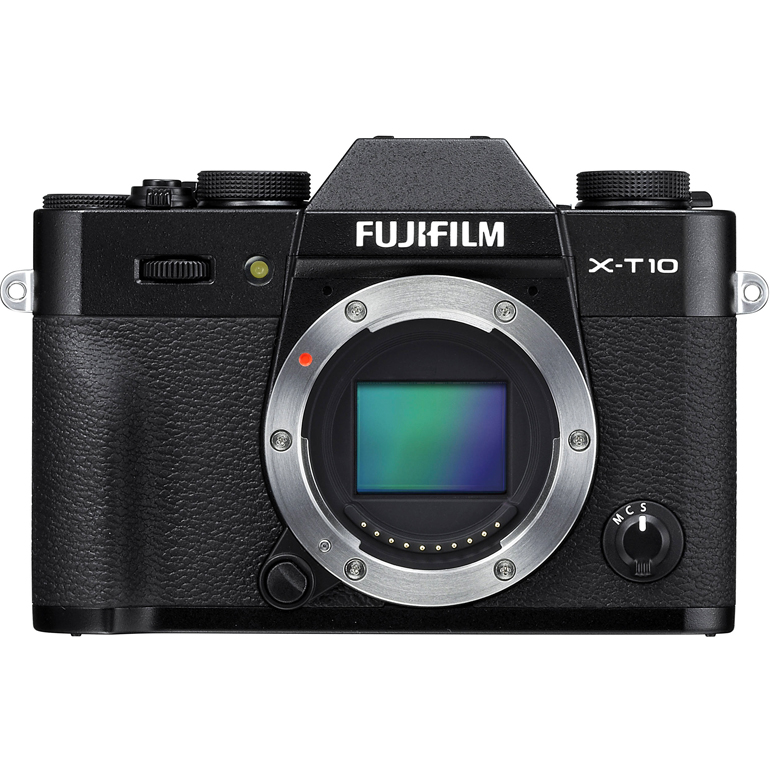
The Fujifilm X-T10 boasts a stylish design, solid build, and excellent customization options, making it user-friendly for aspiring photographers.
Its 16MP sensor delivers impressive image quality and vibrant colors, although the autofocus can be slower than other models, which may affect fast-moving subjects.
Compact and portable, the X-T10 is a great travel companion, though larger-handed users might find it a bit small.

The Sony Alpha a5000 is a compact and versatile camera ideal for those transitioning from smartphone photography, featuring interchangeable lenses for varied shooting situations.
It delivers good image quality and has built-in Wi-Fi for easy photo transfer, though initial setup can be cumbersome.
While user-friendly, some users have noted that its autofocus speed is slower than competitors, making it a reliable choice for aspiring photographers seeking to enhance their skills without the bulk of a traditional DSLR.
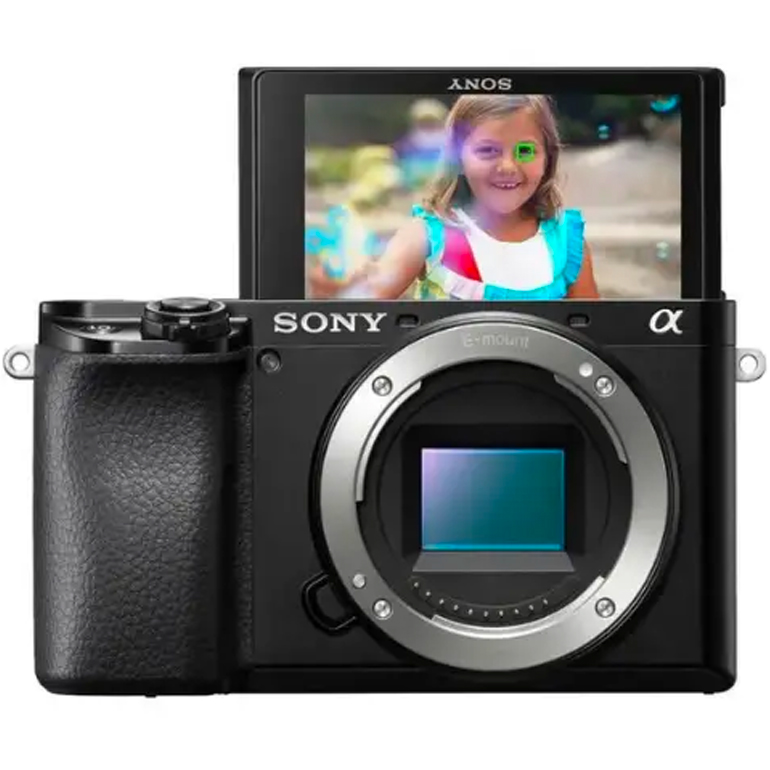
The Sony Alpha a6100 is an attractive mirrorless camera for aspiring photographers looking to upgrade from entry-level DSLRs, offering excellent picture quality and user-friendly handling.
It is well-suited for capturing various scenes, including selfies with added lighting.
However, some users have reported reliability issues, such as malfunctioning components, which raises concerns about build quality, despite the camera’s potential for growth as photography skills develop.
What Affordable Cameras for Aspiring Photographers Should You Avoid?
I’d recommend avoiding the Canon M10 and the Canon EOS Rebel T7 / 2000D if you’re looking for reliable options for aspiring photographers.
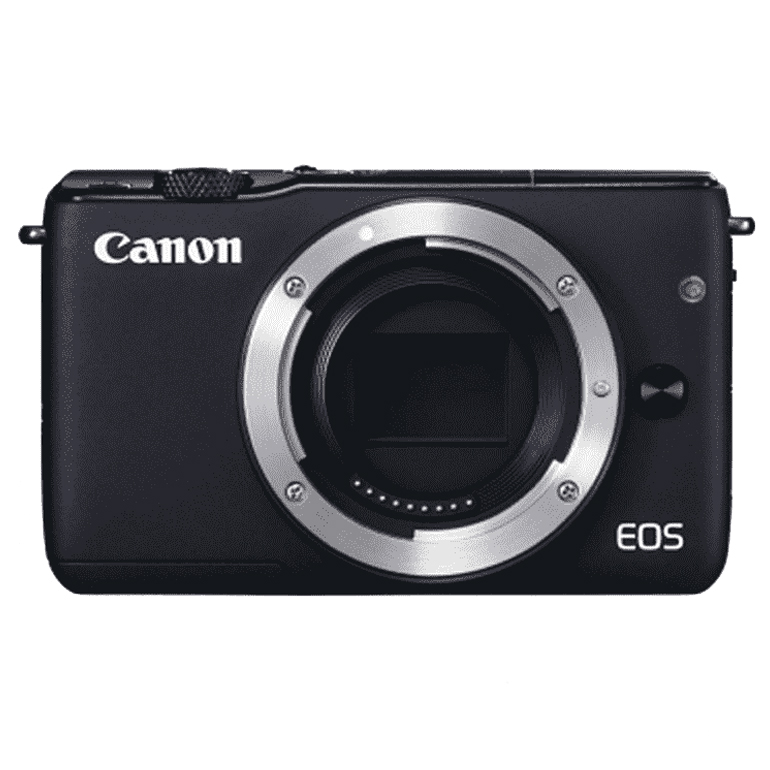
After testing the Canon M10, I found it frustratingly complicated, especially for manual focusing.
The menu system is context-sensitive and poorly documented, making it difficult to navigate.
Plus, the cumbersome process for engaging manual focus often led to accidentally taking multiple out-of-focus shots, which is far from ideal for anyone looking for a smooth shooting experience.

After testing the Canon 2000D, I was really disappointed with its Wi-Fi capabilities.
It doesn’t connect directly to your home network, which means you have to go through your phone or their software—definitely not user-friendly.
The setup process was frustratingly complicated, requiring multiple accounts and various cords, and even then, the camera would frequently disconnect from my PC.
Overall, what should have been a straightforward experience turned into a time-consuming hassle.
Our Recommended Affordable Camera for Aspiring Photographers

The Canon 90D is my top recommendation for aspiring photographers.
Its 32.5 MP APS-C sensor and Dual Pixel autofocus deliver exceptional image quality and quick focusing.
I love the articulated touchscreen for creative angles and vlogging.
While it’s bulkier than mirrorless options, its impressive wildlife shots and 4K video capabilities make it a versatile, valuable investment.
Common Questions
What Are the Key Differences Between DSLR and Mirrorless Cameras?
DSLR cameras use a mirror mechanism to reflect light into an optical viewfinder, while mirrorless cameras rely on electronic viewfinders or LCD screens.
Mirrorless cameras are typically lighter and more compact, while DSLRs often have longer battery life and more extensive lens options.
For beginners, mirrorless cameras can be easier to use due to their simpler design and live view capabilities.
What Features Should I Look for in an Entry-Level Camera?
Look for features such as a good sensor size (APS-C is common), decent ISO performance for low-light shooting, image stabilization, a variety of autofocus points, and manual control options.
A camera with built-in Wi-Fi or Bluetooth can also help with easy sharing of photos.
Which Brands or Models Are Budget-Friendly and Offer Good Image Quality?
Brands like Canon, Nikon, and Sony offer solid entry-level options.
Models such as the Canon EOS Rebel series, Nikon D3500, and Sony Alpha a6000 are well-regarded for their balance of affordability and quality.
Panasonic Lumix and Fujifilm also provide good alternatives in the mirrorless category.
How Important Is Lens Compatibility When Choosing a Camera System?
Lens compatibility is crucial, as it affects your ability to expand your photography skills.
Choose a system with a wide range of lenses available, including options for different photography styles (e.g., portrait, landscape, macro).
This flexibility can help you grow as a photographer without needing to switch systems later.
What Additional Accessories Should I Consider for My First Camera?
Consider investing in a versatile lens (like a 24-70mm zoom), a sturdy tripod for stability, a camera bag for protection, extra batteries for longer shoots, and a memory card with ample storage.
A UV filter for lens protection and a cleaning kit are also good additions to maintain your gear.
In Conclusion
I have looked at over 30 DSLRs and mirrorless cameras for aspiring photographers.
The overall best performer is the Canon 90D, known for its versatility and image quality. The Nikon D7500 impresses with its dynamic range and excellent autofocus. The Canon 850D is user-friendly and offers great value.
Currently, I’m testing several new DSLR and mirrorless camera releases at our Centurion facility. This includes models from Canon, Nikon, Sony, and Fujifilm.
I look forward to sharing the results soon.



